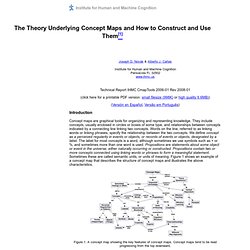

Brain Scanner Records Dreams on Video. Just a few weeks ago, we posted about how brain patterns can reveal almost exactly what you're thinking.

Now, researchers at UC Berkeley have figured out how to extract what you're picturing inside your head, and they can play it back on video. The way this works is very similar to the mind-reading technique that we covered earlier this month. A functional MRI (fMRI) machine watches the patterns that appear in people's brains as they watch a movie, and then correlates those patterns with the image on the screen. With these data, a complex computer model was created to predict the relationships between a given brain pattern and a given image, and a huge database was created that matched 18,000,000 seconds worth of random YouTube videos to possible brain patterns.
Comparing the brain-scan video to the original video is just a way to prove that the system works, but there's nothing stopping this technique from being used to suck video out of people's heads directly. WikIT. Buzan Online has responded to criticism of a lack of academic studies showing the efficacy of mindmapping with a list of references on this page.

None of the papers are linked to there, it's just a plain text list (Why Mr. Buzan? If you claim "The Proof is Here! ", don't you think that transparency is called for?). So WikIT has done the work for them by, as far as we can, gathering the links here for review. But before we look at that list, we need to consider "efficacy of mindmapping" for what? Comments are being added here from time to time, as the papers are read and the conclusions reached extracted. Al-Jarf, R. (2009), Enhancing Freshman students’ Writing Skills with a Mind Mapping software. The author describes a study where students were divided into two groups, one using mind maps (made with FreeMind and by hand) and one without. Boyson, G. (2009), The Use of Mind Mapping in Teaching and Learning. Cain, M. ThinkBuzan Ref. 1.
Radiant Thinking So why do Mind Maps work?

Can’t I just stick to my lists and my conventional tried and tested techniques? In a Mind Map, information is structured in a way that mirrors exactly how the brain functions – in a radiant rather than linear manner. A Mind Map literally ‘maps’ out your thoughts, using associations, connections and triggers to stimulate further ideas. They extract your ideas from your head into something visible and structured. iMindMap retains this ideas-generating radial process with unique organic branch drawing. Research shows that the brain likes to work on the basis of association and it will connect every idea, memory or piece of information to tens, hundreds and even thousands of other ideas and concepts.i Memory A study by Farrand, Hussain and Hennessey (2002)ii found that Mind Mapping improved the long-term memory of factual information in medical students by 10%.
Creativity Learning Teaching. Canas et al.: Concept Maps. Canas & Wilson: Managing, Mapping & Manipulating Conceptual Kn. Novak & Canas: Theory Underlying Concept Maps. Concept maps are graphical tools for organizing and representing knowledge.

They include concepts, usually enclosed in circles or boxes of some type, and relationships between concepts indicated by a connecting line linking two concepts. Words on the line, referred to as linking words or linking phrases, specify the relationship between the two concepts. We define concept as a perceived regularity in events or objects, or records of events or objects, designated by a label. The label for most concepts is a word, although sometimes we use symbols such as + or %, and sometimes more than one word is used.
Propositions are statements about some object or event in the universe, either naturally occurring or constructed. Figure 1. (click on an image for a larger view) Another important characteristic of concept maps is the inclusion of cross-links. Canas & Novak: Re-examining foundation for effective use of co. Canas & Novak: Mining the Web. Sowa: Semantic Networks. John F.

Sowa This is an updated version of an article in the Encyclopedia of Artificial Intelligence, edited by Stuart C. Shapiro, Wiley, 1987, second edition, 1992. Most of the text from 1992 is unchanged, but more references and updates have been added. A semantic network or net is a graph structure for representing knowledge in patterns of interconnected nodes and arcs. What is common to all semantic networks is a declarative graphic representation that can be used to represent knowledge and support automated systems for reasoning about the knowledge. Definitional networks emphasize the subtype or is-a relation between a concept type and a newly defined subtype.
Network notations and linear notations are capable of expressing equivalent information. 1. The oldest known semantic network was drawn in the 3rd century AD by the Greek philosopher Porphyry in his commentary on Aristotle’s categories. Figure 1. Tergan: Concept maps for managing individual knowledge. Primo: On the Use of Concept Maps as an Assessm. Shum & Okada: Knowledge Mapping for Open Sensemaking.